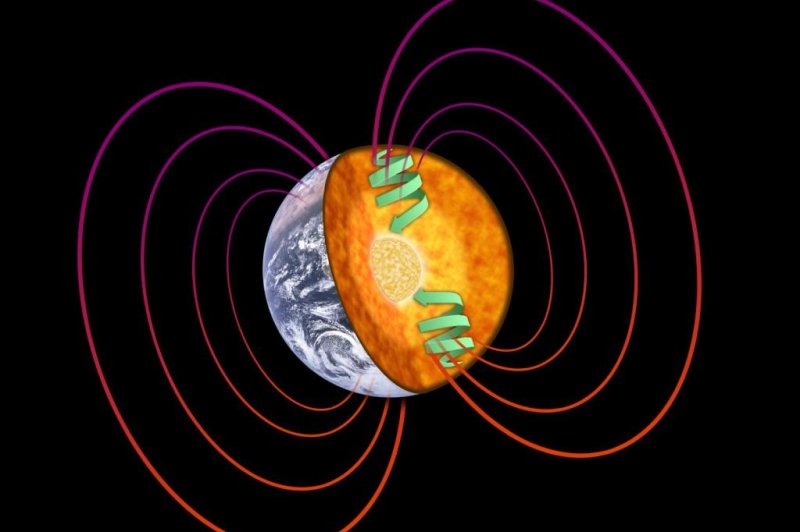Nickel is key to the Earth's creation of its own magnetic field. Photo by TU Wien
July 13 (UPI) -- New research suggests nickel is essential to the Earth's magnetic field.
Earth's magnetic field is generated by what's called the "dynamo effect," a unique combination of a geophysical factors. Of these factors, the convection currents of Earth's conductive, molten core and Earth's constant rotation are the most important.
Earth's core is made primarily of melted iron, but new research suggests iron alone can't account for the power of the dynamo effect.
Nickel, which makes up 20 percent of Earth's core, is essential.
The extreme temperatures and pressures found deep inside Earth account for the core's unique characteristics.
"Under these extreme conditions, materials behave in a way which may be quite different from what we are used to," Karsten Held, a physicist at TU Wien in Austria, said in a news release. "It is hardly possible to recreate these conditions in a lab, but with sophisticated computer simulations, we are able to calculate the behavior of metals in the Earth's core on a quantum mechanical level."
Convection currents, created by the forces of escaping thermal energy, combine with the Coriolis forces generated by the rotation of the Earth to form unique cycles of extremely hot material.
"When electrical currents are created in such a system of flows, they can cause a magnetic field which in turn increases the electrical current and so forth -- and finally the magnetic field becomes so strong that we can measure it on the surface of the Earth," said researcher Alessandro Toschi.
Until now, scientists weren't sure why convection currents are generated. Iron is very conductive, and the metal's atoms should be able to carry electric flows and dissipate heat without forming currents. But nickel is much less conductive, and its atoms scatter under high pressure.
"As a consequence, the thermal conductivity of nickel and, thus, the thermal conductivity of the Earth's core is much lower than it would be in a core consisting only of iron," Toschi said.
The addition of nickel means heat cannot escape toward Earth's surface via electron alone, and thus, convection currents are generated.
The improved understanding of Earth's core was made possible with large-scale computer simulations.
"We did not only have a look at iron and nickel, but also at alloys of these two materials. We also had to take imperfections and irregularities into account, which made the computer simulations even more challenging," said Held.
The models, detailed this week in the journal Nature Communications, offered scientists a new understanding of electronic scattering within different materials.
"Soon, these improvements of computational material algorithms will also lead to exciting forefront applications in chemistry, biology, industry and technology," said Toschi.















